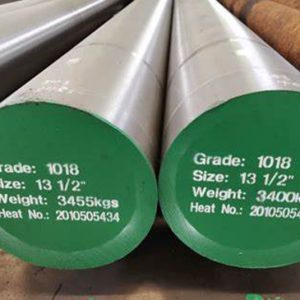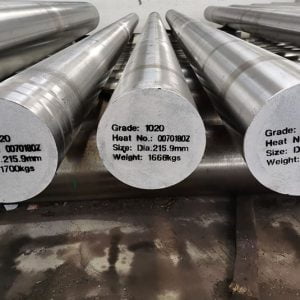مقدمة
The forging process is a fundamental technique in metalworking, known for its ability to enhance the strength and durability of metals. By shaping metal through localized compressive forces, typically delivered by a hammer or a die, the forging process refines the grain structure of the metal and improves its mechanical properties. This blog will delve into how the forging process works, its benefits, and why it is crucial in manufacturing durable and strong metal components.
Understanding the Forging Process

The forging process involves several stages that contribute to the final strength and durability of the metal. Here’s an overview of the key steps:
Heating
The metal is heated to a high temperature, known as the forging temperature, to make it malleable and easier to shape. The heating process is crucial because it reduces the risk of cracking and other defects.
Deformation
Once heated, the metal is deformed under high pressure using various forging techniques. This step is where the metal is shaped into the desired form. Common forging techniques include:
- Open-die forging: The metal is placed between two flat dies that do not enclose the workpiece, allowing for a variety of shapes.
- Closed-die forging: The metal is placed in a die resembling a mold, producing more precise shapes.
- Seamless rolled ring forging: Used to create high-strength rings by rolling a punched circular piece of metal into a ring shape.
Cooling
After shaping, the metal is slowly cooled in a controlled environment to relieve internal stresses and improve its mechanical properties. This process, known as annealing, helps achieve the desired balance of hardness and toughness.
Grain Refinement
The forging process significantly refines the grain structure of the metal, aligning the grains to follow the contours of the part, which enhances the metal’s strength and durability.
Benefits of the Forging Process
-
 1018/1.0401 فولاذ كربوني 1018/1.0401
1018/1.0401 فولاذ كربوني 1018/1.0401 -
 1020/1.0402/1.0402 فولاذ كربوني
1020/1.0402/1.0402 فولاذ كربوني -
 فولاذ الأدوات H10/1.2365/1.2365
فولاذ الأدوات H10/1.2365/1.2365 -
 فولاذ الأدوات H11/1.2343/1.2343
فولاذ الأدوات H11/1.2343/1.2343 -
 فولاذ الأدوات O1/1.2510/1.2510
فولاذ الأدوات O1/1.2510/1.2510 -
 1.2842 فولاذ الأدوات 1.2842
1.2842 فولاذ الأدوات 1.2842 -
 فولاذ D3/1.2080 أدوات وقوالب D3/1.2080
فولاذ D3/1.2080 أدوات وقوالب D3/1.2080 -
 H13/1.2344 H13/1.2344 فولاذ الأدوات والصلب
H13/1.2344 H13/1.2344 فولاذ الأدوات والصلب -
 D2/1.2379 D2/1.2379 فولاذ الأدوات والقالب
D2/1.2379 D2/1.2379 فولاذ الأدوات والقالب
The forging process offers several advantages that make it superior to other metalworking techniques, particularly in terms of enhancing the strength and durability of the final product.
Improved Mechanical Properties
The compressive forces used in forging help to eliminate internal voids and create a more uniform grain structure, resulting in improved mechanical properties such as:
- Increased tensile strength: The ability of the metal to withstand tension without breaking.
- Enhanced fatigue resistance: The metal’s ability to withstand cyclic loading without failing.
- Superior impact toughness: The capacity of the metal to absorb energy during impact.
Structural Integrity
Forging produces parts with superior structural integrity due to the following factors:
- Continuous grain flow: The grain flow follows the shape of the forged part, reducing the risk of fractures and improving overall strength.
- Elimination of defects: The high-pressure forging process helps eliminate defects such as porosity, inclusions, and cavities.
Better Wear Resistance
The forging process improves the metal’s wear resistance, making it more durable and suitable for high-stress applications. This is particularly important in industries such as aerospace, automotive, and heavy machinery, where components are subjected to extreme conditions.
Comparing Forging with Other Metalworking Processes
To understand the unique advantages of the forging process, it is helpful to compare it with other common metalworking techniques such as casting and machining.
| Property | Forging | Casting | Machining |
|---|---|---|---|
| Grain Structure | Refined and continuous | Random and discontinuous | Depends on initial material |
| Strength | High | Moderate | Depends on material and process |
| Durability | High | Moderate | Depends on material and process |
| Precision | Moderate to High (in closed-die) | High (in investment casting) | Very High |
| Production Speed | Moderate | High (in sand casting) | Low |
| Material Waste | Low | Low to Moderate | High |
| Cost | Moderate to High | Low to Moderate | High |
Forging vs. Casting
- Strength and Durability: Forged parts are generally stronger and more durable than cast parts due to the refined grain structure and elimination of internal defects.
- Precision: Casting can achieve higher precision and is suitable for complex shapes, but the parts may have internal voids and a less favorable grain structure.
- Cost and Speed: Casting is usually cheaper and faster for large production runs, but it lacks the mechanical properties that forging provides.
Forging vs. Machining
- Strength and Durability: Forging enhances the material’s strength and durability, while machining does not alter the internal structure of the metal.
- Precision: Machining offers higher precision and is ideal for finishing parts to exact dimensions, but it generates more material waste.
- Material Waste: Forging is more material-efficient compared to machining, which often results in significant material loss due to cutting and shaping processes.
Types of Forging Processes
Different forging processes are suited to various applications and requirements. Here are some common types:
Open-Die Forging
In open-die forging, the metal is placed between two flat dies and deformed by repeated blows. This process is versatile and can produce a wide range of shapes and sizes.
Applications
- Large components such as shafts, rollers, and cylinders.
- Custom and small batch production where flexibility is required.
Closed-Die Forging
Closed-die forging, also known as impression-die forging, involves placing the metal in a die resembling a mold. The metal takes the shape of the die as it is compressed.
Applications
- High-volume production of complex parts with precise dimensions.
- Automotive components, aerospace parts, and industrial machinery.
Seamless Rolled Ring Forging
This process starts with a circular piece of metal that is punched in the center to form a donut shape. The ring is then rolled to the desired size and shape.
Applications
- High-strength rings for bearings, gears, and flanges.
- Components requiring superior strength and fatigue resistance.
Precision Forging
Precision forging aims to produce near-net shape parts that require minimal finishing. This process combines the advantages of forging with the precision of machining.
Applications
- High-precision components for aerospace, medical devices, and high-performance engineering.
Case Studies: Forging in Industry
To illustrate the impact of the forging process on metal strength and durability, here are some real-world examples from various industries.
صناعة الطيران والفضاء
Turbine Blades
Forged turbine blades in jet engines and power generation turbines benefit from enhanced strength and fatigue resistance. The continuous grain flow achieved through forging ensures the blades can withstand extreme operational conditions.
Landing Gear Components
Forged landing gear components are crucial for their ability to absorb impact and bear heavy loads during takeoff and landing. The superior strength and durability of forged parts enhance the safety and reliability of aircraft.
صناعة السيارات
Crankshafts
Forged crankshafts in engines offer better performance and longevity compared to cast or machined alternatives. The high strength and fatigue resistance of forged crankshafts are essential for high-revving engines and heavy-duty applications.
Suspension Components
Forged suspension components, such as control arms and steering knuckles, provide increased durability and safety. The improved mechanical properties of forged parts ensure they can withstand the stresses of daily driving and harsh road conditions.
Oil and Gas Industry
Drill Bits
Forged drill bits used in oil and gas exploration exhibit superior toughness and wear resistance. The ability to withstand high pressures and abrasive environments makes them ideal for drilling operations.
Flanges and Fittings
Forged flanges and fittings in pipelines and pressure vessels offer enhanced strength and reliability. The elimination of internal defects through forging ensures leak-proof and durable connections.
Future Trends in Forging Technology

The forging industry continues to evolve, with new technologies and innovations enhancing the process further. Here are some future trends to watch:
Advanced Materials
The development of new alloys and materials with superior properties will expand the applications of forging. Materials such as high-entropy alloys and metal matrix composites offer potential for even stronger and more durable forged parts.
Automation and Robotics
Automation and robotics in forging processes will increase efficiency, precision, and safety. Advanced robotic systems can handle high temperatures and repetitive tasks, reducing the risk of human error and injury.
3D Printing and Additive Manufacturing
Combining forging with 3D printing and additive manufacturing technologies can create complex and high-strength parts with minimal waste. This hybrid approach offers the best of both worlds, with the precision of 3D printing and the mechanical properties of forging.
Sustainability Initiatives
Efforts to make the forging process more sustainable include reducing energy consumption, recycling waste materials, and adopting eco-friendly practices. These initiatives aim to minimize the environmental impact of forging while maintaining high-quality production standards.
الأسئلة الشائعة
What is the primary benefit of the forging process?
The primary benefit of the forging process is the enhancement of metal strength and durability. Forging refines the grain structure, eliminates internal defects, and creates parts with superior mechanical properties.
How does the forging process improve metal strength?
The forging process improves metal strength by aligning the grain structure along the contours of the part, reducing internal voids, and creating a more uniform and dense material. This results in increased tensile strength, fatigue resistance, and impact toughness.
What types of metals can be forged?
Most metals can be forged, including steel, aluminum, titanium, copper, and various alloys. The choice of metal depends on the application and the desired mechanical properties.
Is forging suitable for high-volume production?
Yes, forging, particularly closed-die forging, is suitable for high-volume production of complex parts. The process is efficient and can produce large quantities of high-quality components with consistent properties.









